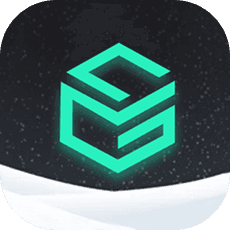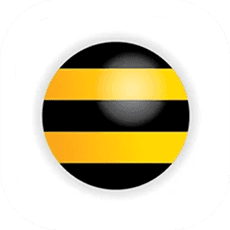Pushwoosh: launch flexibly, personalize easily, compared to Customer.io
Enjoy more flexible options for campaign mapping, streamlined messaging personalization, and attractive pricing compared to Customer.io
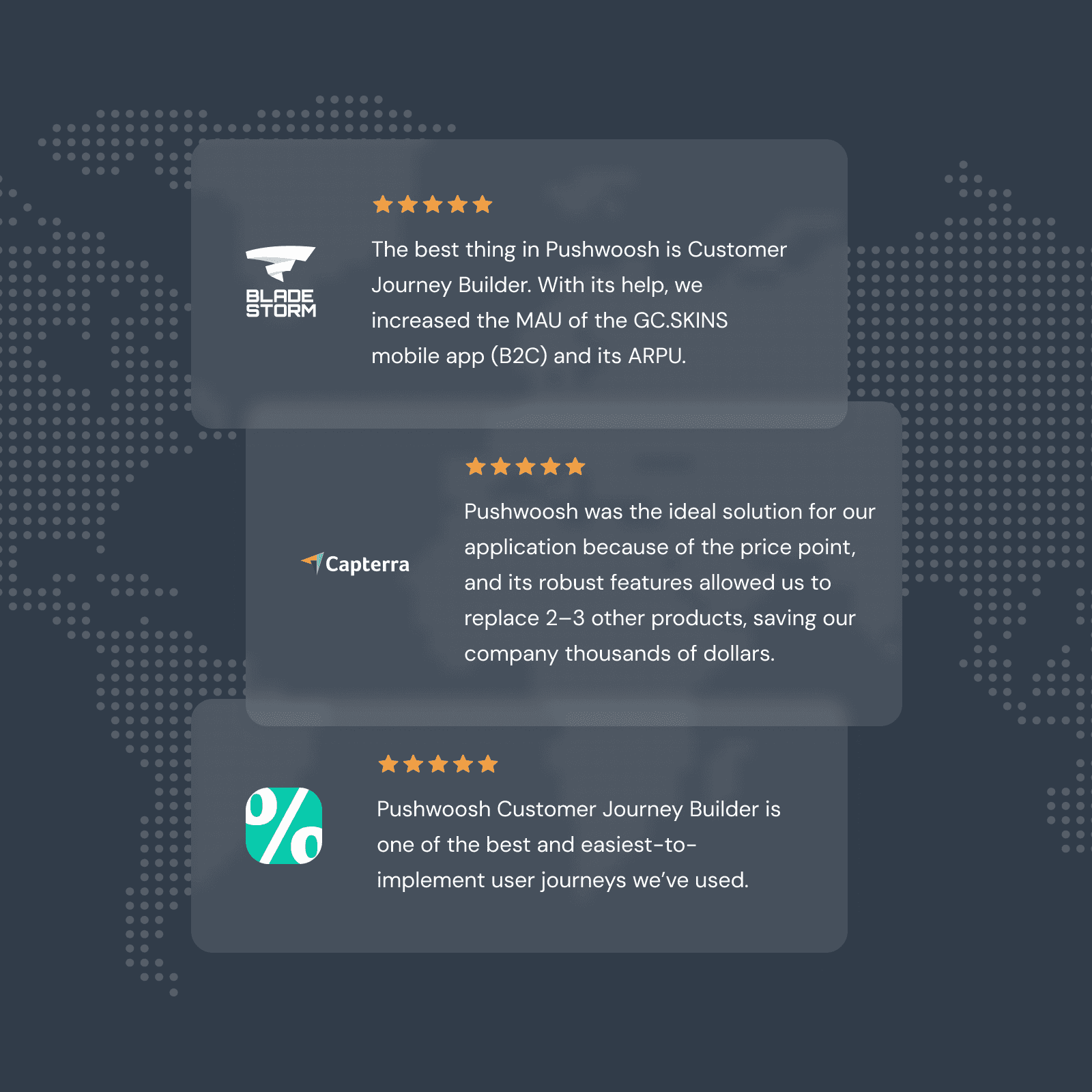
Pushwoosh offers greater flexibility in campaign launch and logic
In contrast, Customer.io’s campaign logic is quite rigid.
Pushwoosh
- Scheduling: easy to set up and full of options
One-time and recurring campaigns are set up easily, by selecting dates on the calendar or choosing periodic launches. - Two and more entry triggers in one campaign
Users can enter the same campaigns by two and more separate triggers. - Build-and-launch segmentation
Create your segments right on the campaign canvas. - Track all campaign goals achieved
Even before a user receives your message. - Flexible branching conditions in user journeys
Split messaging flows based on events, event attributes, event groups, or any combinations of these.
Customer.io
- Scheduled campaigns are challenging to set up
Scheduling is done by assigning timestamp attributes to users, which can be tricky for recurring campaigns. - Only one entry trigger in a campaign
Users can enter campaigns only by one trigger. - Segments are set up in a separate workflow
You should pre-create segments before mapping your campaign. - Track only post-message goals
Accomplished goals are only counted after a user receives a message. - Branching is limited to the attributes of a single event
You can’t split messaging flows based on events or event groups.
Map your messaging campaigns in Pushwoosh Customer Journey Builder
Discover how flexible segmentation and omnichannel messaging enable highly targeted campaigns that drive conversions and revenue.
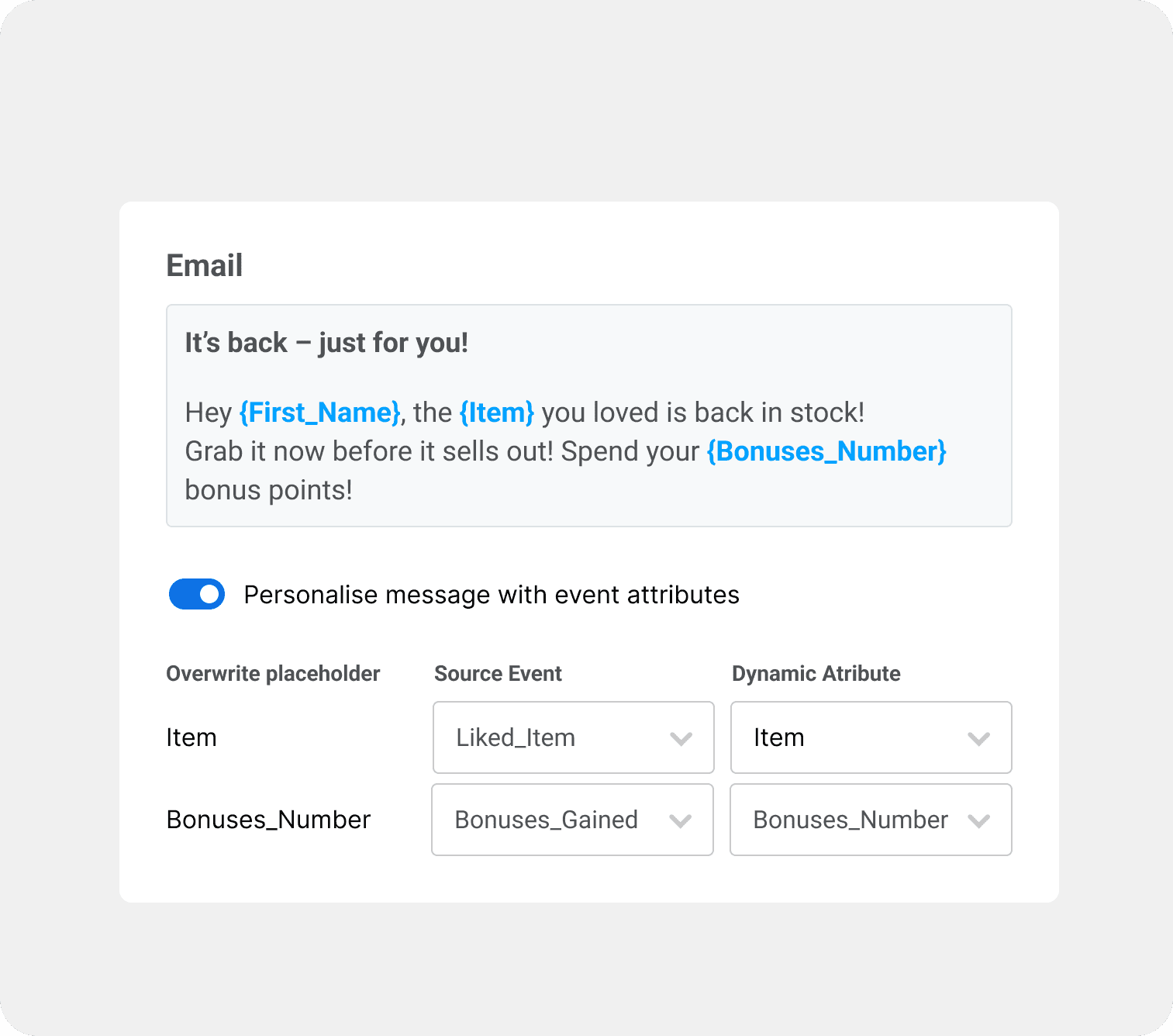
Personalization in a few clicks without hours of training
With Pushwoosh’s Dynamic Content feature, personalizing your messages is fast and easy:
- Personalization data is instantly within reach—just select attributes from the dropdown list;
- No need for manual writing. Text placeholders are automatically replaced with the selected attributes;
- You can personalize your messages based on both user data and event data;
In comparison, Customer.io uses Liquid — a syntax for both content personalization and defining communication logic. While Liquid offers additional capabilities, it requires time, effort, and prior training. Customer.io doesn’t offer a more streamlined tool.
By the way, Pushwoosh provides both options: the Dynamic Content feature and Liquid-based personalization. So, you can choose between a faster, at-your-fingertips tool or an advanced tool.
Pushwoosh offers more attractive pricing
Customer.io’s pricing structure includes additional fees and hidden costs.
Pushwoosh
- Unlimited email contacts
Pushwoosh only charges for emails sent. - No hidden costs for data queries
Pushwoosh doesn’t limit data queries, making it attractive for scaling businesses.
Customer.io
- Overage charge of $0.009 for each additional contact
Customer.io offers 5,000 free profiles in their Starter plan. An email contact counts as a profile. - Additional fees for API calls to data pipelines
Customer.io charges for API calls, making costs unpredictable and likely to increase as the user base grows.
Calculate your predictable monthly cost with Pushwoosh
Unlike Customer.io's per-contact overage fees and API call charges, Pushwoosh offers transparent device-based pricing. Unlimited email contacts, no data query limits—just straightforward monthly costs that scale with your business.
Which channels do you need?
How many users are in your database?
How do you plan to use the email channel?
Estimated number of email sends: 80000
Advantages of custom plan:
- Custom billing terms and cycle
- Personal onboarding program
- 24/7 priority support
- Dedicated manager
- SLA and guaranteed uptime
- MSA, DPA, Commercial agreement
- SSO, Dedicated private cloud
- Ultra high-speed push delivery option
Your cost breakdown:
- CDP $0
All features are available:
- Campaigns Unlimited
- Mobile push notifications Unlimited
- Mobile in-apps Unlimited
- Segmentation Unlimited
- Personalization Unlimited
- A/B/n testing Unlimited
- Event history Unlimited
- API access Unlimited
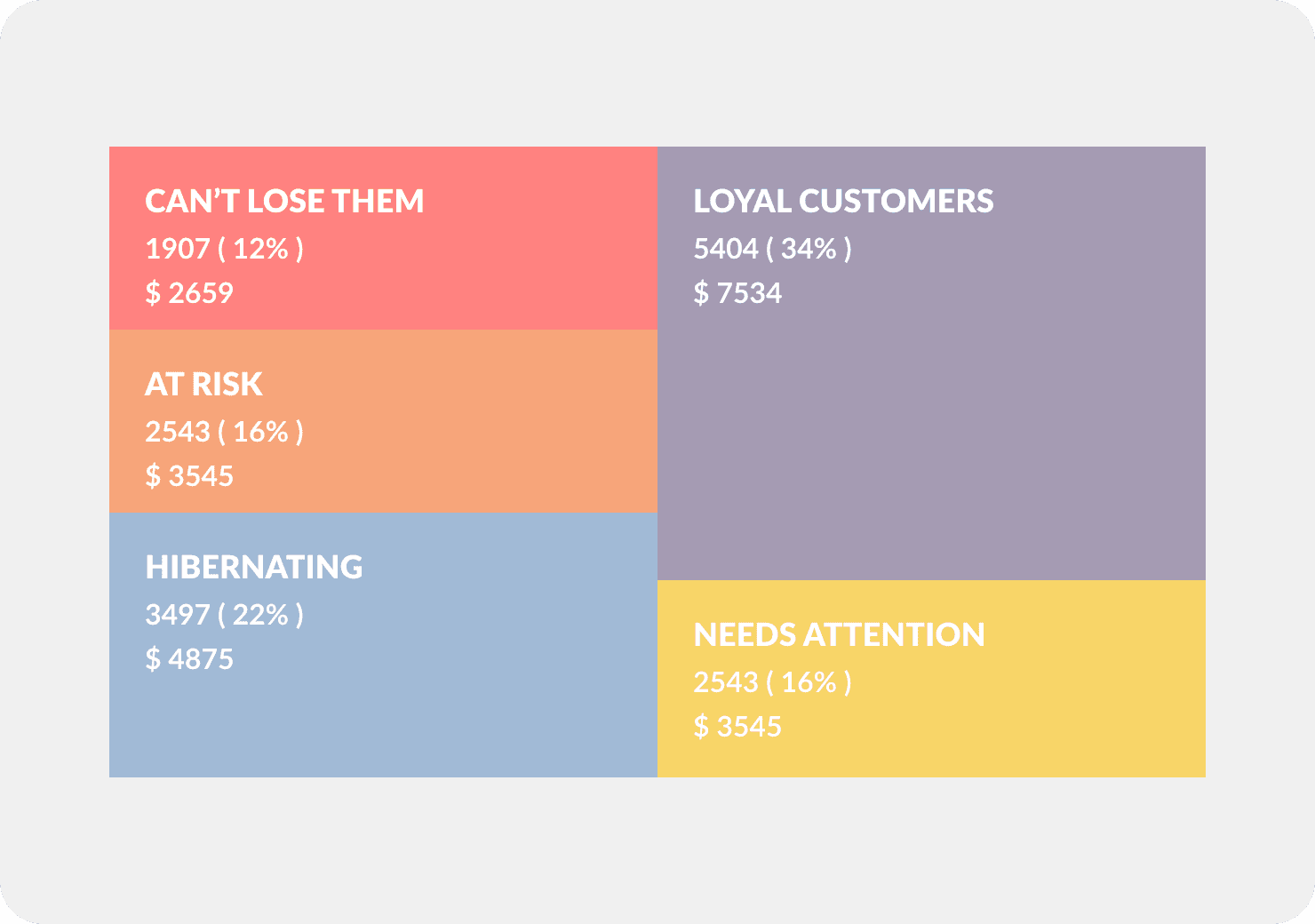
Pushwoosh: next-level marketing analytics
Pushwoosh offers advanced analytics capabilities, including features not available in Customer.io:
- Customizable dashboards for push notifications, emails, in-apps, events, and overall app statistics;
- User Retention Curve graph with customizable date range display;
- RFM (Recency, Frequency, Monetary) grid with the option to use the resulting user segments in communication campaigns.
Pushwoosh vs. Customer.io: comparison in detail
1. Integration
| Feature | Pushwoosh | Customer.io |
|---|---|---|
| SDK | yes | yes |
| APIs | yes | yes |
2. Supported channels and features
| Feature | Pushwoosh | Customer.io |
|---|---|---|
| Mobile push notifications | yes | yes |
| Web push notifications | yes | yes |
| High-speed push notifications | up to 500k a second | no |
| yes | yes | |
| SMS | yes | yes |
| yes | yes | |
| Slack | yes | yes |
3. Automated messaging & workflows
| Feature | Pushwoosh | Customer.io |
|---|---|---|
| Automated multichannel workflows builder | yes (Customer Journey Builder) | yes (Journeys) |
| Channel reachability check | yes | no |
| Global frequency capping | yes | yes |
| Scheduled campaigns | yes (fully automated) | yes (limited automation) |
| Recurring campaigns | yes (fully automated) | yes (limited automation) |
| Time delay | yes | yes |
| Dynamic time delay | yes | no |
| A/B testing | yes, unlimited A/B/n testing | yes, A/B testing |
| Segment triggers | yes | yes |
| Event triggers | yes | yes |
| Object triggers | yes (through user tags) | yes (as a separate flow element) |
| Relationship triggers | yes (through user tags) | yes (as a separate flow element) |
4. Segmentation
| Feature | Pushwoosh | Customer.io |
|---|---|---|
| Build-and-launch segmentation (set on campaign canvas) | yes | no |
| RFM segmentation | yes | no |
| Assigning user tags throughout a messaging flow | yes | no |
| Segmentation based on user behavior | yes | yes |
| Segmentation based on user data | yes | yes |
| Import of segments from 3rd-party services | yes | yes |
5. Personalization
| Feature | Pushwoosh | Customer.io |
|---|---|---|
| Timezone sensitivity | yes | no |
| Silent hours | yes | no |
| Dynamic content | yes | no |
| Liquid-based personalization | yes | yes |
| Multi-language messaging | yes | yes |
| Deep linking | yes | yes |
6. Analytics
| Feature | Pushwoosh | Customer.io |
|---|---|---|
| Individual message metrics on canvas | yes | no |
| App usage statistics | yes | no |
| App revenue metrics (conversions, revenue, ARPU) | yes | no |
| Delivery metrics (sent, delivered, opened, CTR, etc.) | yes | yes |
| Campaign overview statistics | yes | yes |
| Customizable dashboards | yes | no |
| User retention analytics (User Retention Curve graph) | yes | no |
| Leaderboard (shows which campaigns got the highest and the lowest metrics) | no | yes |
7. Extra features
| Feature | Pushwoosh | Customer.io |
|---|---|---|
| Silent push | yes | no |
| Best time to send option (a message will be delivered when a user is most likely to engage) | yes | no |
| Custom subscription prompts for web push notifications | yes | no |
| Cross-channel delivery (the same notification can be delivered to different sites or devices, no need to set it up twice for mobile and web) | yes | no |
| Message inbox | yes | no |
Trusted by companies that push their limits
Most relevant real-time analytics
Pushwoosh analytics is based on historical data, not predictions. Unlike the competitors, we don't charge an extra for off-the-shelf solutions that don't guarantee any sustainable results.
Data privacy policy
Pushwoosh stores and processes all data on its own hardware servers in the US and Germany. For our European customers, we guarantee GDPR compliance.
Results come before words
Find out how companies of all sizes across all industries achieve their business goals with Pushwoosh
